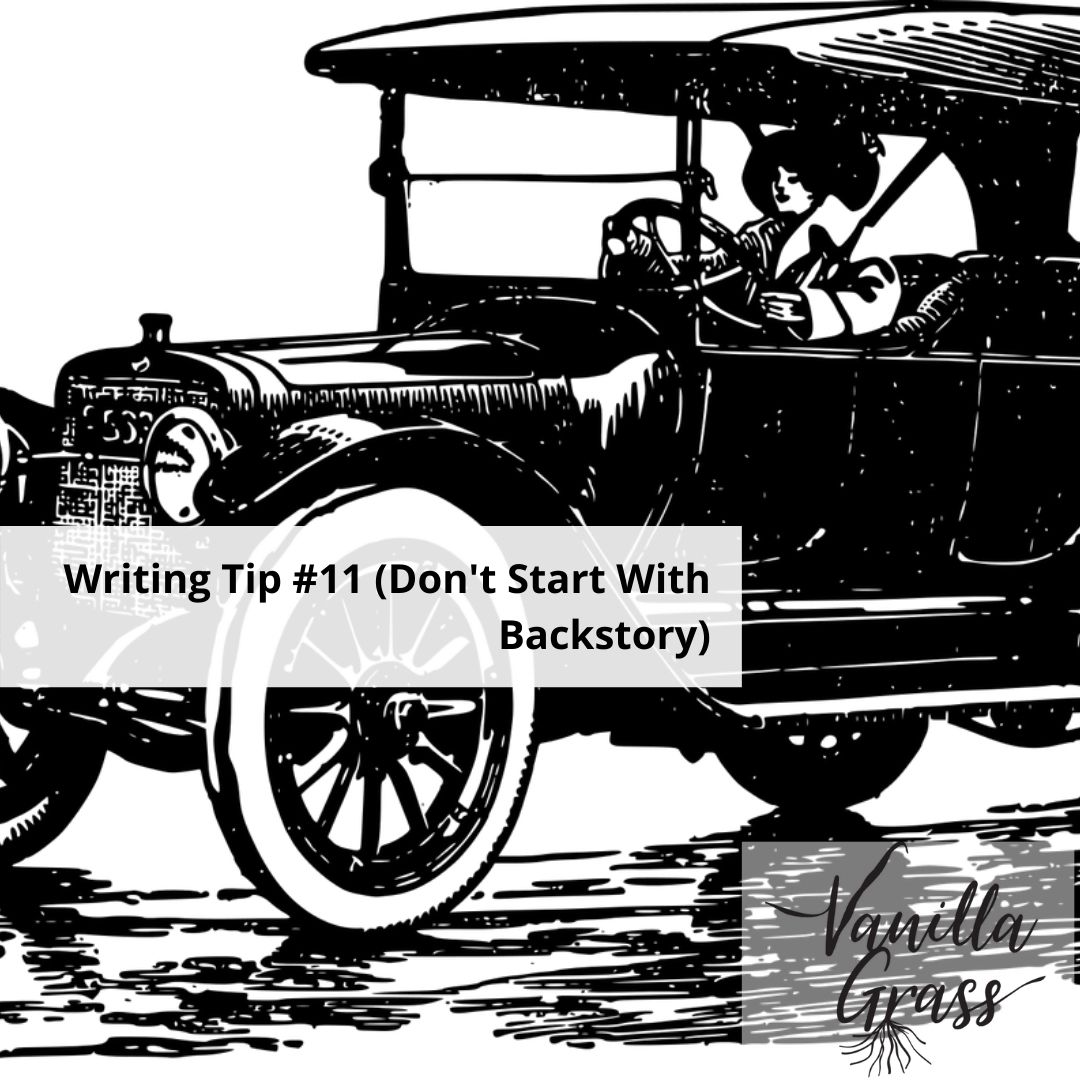“Don’t start with backstory! Your readers will lose interest before you’ve even begun,” is arguably the most common feedback I hear for first chapters.
And the reason is because the advice holds true. But it’s also a fine line.
Because the other comment I hear often in regards to the start of a book is: I didn’t care about the character, so I didn’t keep reading.
How do you create a character that readers know enough about to care for them without boring them to tears with backstory?
The answer:
A tight pov and little exposition.
What Does an Info-dump of Backstory Look Like?

A block of exposition with little action and a lot of telling.
Sara waited on the couch for the doorbell to ring. She had won three gold medals in the olympics when she was younger and living her glory days. Two in pole-vaulting and a third in the hundred-yard dash. She was a legend in the running community and after a the little girl next door found out who she was, she had asked her to speak in her class at school. Sara wasn’t a fan of talking in front of people, but the little girl had begged. Now she as soon as the doorbell rang she’d be off on her next adventure: talking to elementary school children without boring them to tears!
What do you think? Do you care about the character? Eh, maybe. Are you entertained? Eh, maybe. Which in a bookstore surrounded by literally thousands of other choices means you’re most likely going to put it down. Perhaps with gusto.
This style of writing shouldn’t be used anywhere in a book. But if you feel the need to cram one of these down your readers’ throats, please don’t do it in the beginning.
So how can we convey some of this information to the readers so they care about Sara and her achievements without making them want to rub book dust in their eyes?
A Tight Point of View and Sensory Details Can Convey Backstory Without Being Painful.

Observe:
Sara stood up from her paisley couch for the third time to go check the box she had assembled for this morning. Unsatisfied with the display, she pulled her gold medals out and rubbed a finger over the emblazoned #1 and the words Pole Vaulting yet another time. It had been so long since her legs were spry enough to even walk up the stairs much less jump anything. But alas. There was nothing she could do about that now.
The doorbell rang. Sara set her medals down with one last brush and hobbled to the door.
“Hey, ho!” little Addie said with a beaming smile. Her pigtails bounced and swayed as she pranced about in her white sneakers. “You ready to go show off at my school? All my friends are gonna be so jealous that I have a neighbor as cool as you.”
Sara grinned. “Absolutely.” But her stomach swam in more circles at the thought of talking to a bunch of children about winning the Olympics than when she actually had. “Let’s go.”
So?
What did you think this time? Did you learn just as much about Sara? Yes. Were there more words the second time? Yes. But were you more entertained? Yes!
By taking out a narrator-like explanation of past events and weaving them into the thoughts and feelings of the characters, and therefore what they are doing, you can convey just as much information while keeping the action moving.
For other great writing tips, be sure to check out our series! Writing Tip #5 on adding variety to your sentence beginnings is a great start. Or check out our Quick Writing Tips for Writers Series below!
- Writing Tip #1: Punctuation Abuse
- Writing Tip #2: When to Use Adverbs
- Writing Tip #3: Use Dialogue Tags Appropriately
- Writing Tip #4: Avoid Repetitive Words
- Writing Tip #5: Add Variety to Sentence Beginnings
- Writing Tip #6: Don’t Start With Dialogue
- Writing Tip #7: Tighten Sentences
- Writing Tip #8: Watch Your Adjectives
- Writing Tip #9: Make Analogies Relevant
- Writing Tip #10: Vary Sentence Length

